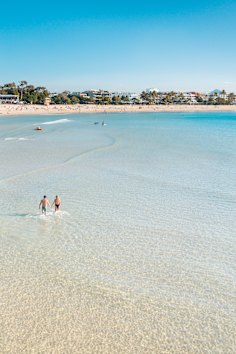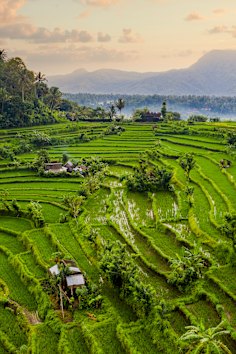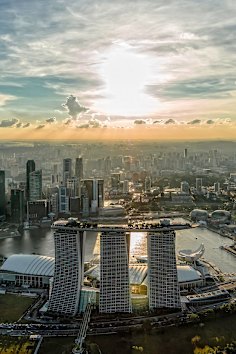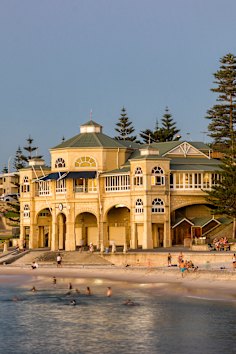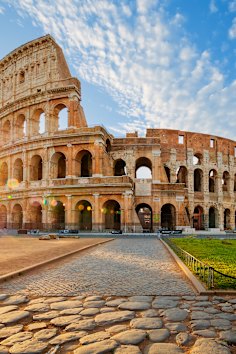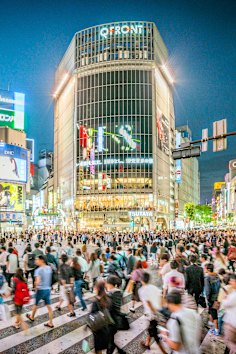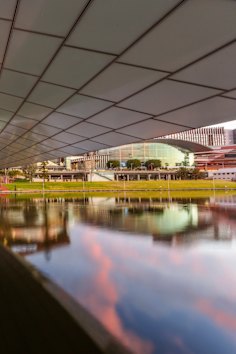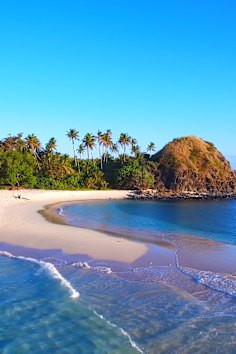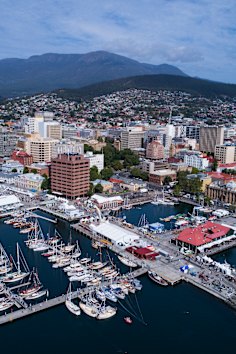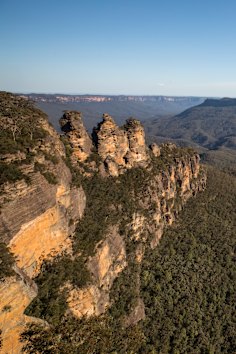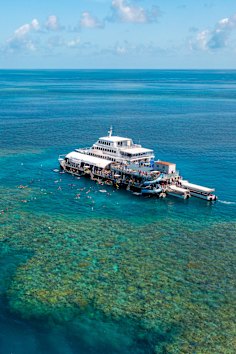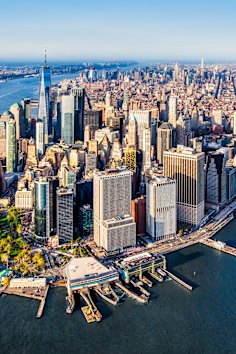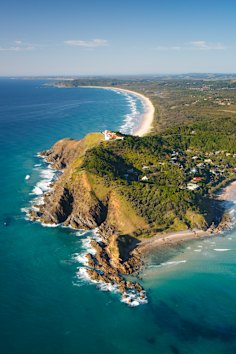After an hour's chillaxing in the Blue Lagoon – where I've waded through soothing 40C waters, plastered milky-white silica mud over my face and marvelled at the surreal beauty of a complex that's mushroomed in a crinkly lava field – I have serious hunger pangs.
Fortunately, I don't have to go far to ease them. Built into a cliff overlooking this dazzling geothermal spa – one of Iceland's most popular tourist attractions – LAVA restaurant is run by two of the country's most celebrated chefs, Thrainn Freyr Vigfusson and Viktor Orn Andresson, the 2014 Nordic Chef of the Year. Now Iceland is renowned for many things – its awe-inspiring volcanic landscapes, magical northern lights and enigmatic musicians (Bjork) – but its cuisine, it's fair to say, has an underwhelming international reputation, largely thanks to attention-grabbing traditional "delicacies" such as hakarl (fermented shark meat), rams' testicles and singed sheep heads.
You can sample these oddities on your Icelandic travels, especially at the country's cultural heritage festivals, but you'll rarely find them on everyday menus – certainly not at LAVA, where the emphasis, explains Andresson, is on "using premium and fresh Icelandic ingredients to provide quality food in an unforgettable setting".

The Blue Lagoon geothermal spa is one of the most visited attractions in Iceland. Credit: Alamy
LAVA is a smart but casual place. Half my fellow diners are in bath-robes, having come before or after their session in a lagoon that provides a dreamy backdrop to prandial proceedings. Tempted by the seafood menu (garlic-marinated langoustine soup and monkfish with grilled root vegetables, creamy barley and lemon sauce), I plump for the two-course Iceland gourmet menu (priced ISK5900/$65), which starts with slow-cooked Arctic char – a freshwater fish rife in Iceland's glacier-fed lakes and streams. Closely related to the Atlantic salmon and brown trout, it's served here, pink-hued, with sunchokes, apple and water cress. Mains is rack of lamb with celeriac, pearl onion, pear and dill. Both dishes are ridiculously Instagrammable and thankfully taste as good as they look.
I'm also left full and satisfied (which doesn't always happen when I dine at sleek restaurants; portion sizes are often too meagre for my ravenous appetite). In Iceland, however, I'm rarely disappointed come meal time, by quality or quantity. "One of the things that struck me about Iceland when I first came here in 2001 was how the people prided themselves on being foodies," says Jeff Thomson, the Canadian guide of our Collette Inspiring Iceland tour, an eight-day jaunt around this bewitching North Atlantic island (of which a visit to the Blue Lagoon is one of several highlights).
"It's true," adds our Icelandic driver Kristjan Gudmundsson. "But in recent years, the food has definitely improved. Icelanders are travelling more and more overseas and know what's out there, food-wise. They demand quality, so if you don't move with the times, you will go out of business." Delicious cuisine fuels Reykjavik, Iceland's vibrant little capital. Cosmopolitan eateries abound – with Thai, Indian, Mexican and Mediterranean restaurants dotting the world's most northerly capital – yet the city's most compelling dining venues are distinctly Nordic (though happy to blend exotic foreign flavours to their dishes).
Our tour group "welcome dinner" takes place at Restaurant Reykjavik. Like many establishments in the capital's historic core, it occupies a colourfully-painted wooden building dating back to the 19th century, when Reykjavik was a tiny fishing village. "This building was once next to the sea," says the restaurant's maitre d'. "Fishing boats would have been right here, where we stand. Some of the old harbour walls are in our basement."
Land reclamation schemes mean we're now 200 metres from Reykjavik's salty-scented waterfront, but a nautical theme prevails here, with contemporary art of Icelandic scenery decorating the walls and the all-you-can-eat ''seafood buffet'' (ISK6750) flaunting a smorgasbord of seasonal fishy treats. Jeff waxes lyrical about the Atlantic blue mussels, which come bathed in white wine and herbs. I find the baked salmon with teriyaki sauce incredibly more-ish. Ditto the zesty mixed seafood ceviche. I'm not so enamoured by the pickled herring and dried salted cod.
And I leave well alone the minke whale (offered both cured and smoked). Despite considerable global condemnation, Iceland's centuries-old appetite for whaling continues (ironically, it's estimated that up to 40 per cent of Icelandic whale meat consumption is by curious tourists).
With four nights in Reykjavik, we have ample chance to explore the city's culinaryscape. I'm told by several restaurateurs that after the devastating economic crash in 2008, Icelanders could no longer afford to import extravagant food products, so were forced to forage their own natural resources more. And they have quite a bounty (the notable exception being wine, which still arrives from as far afield as Australia, New Zealand and Chile). Fish and seafood is, naturally, a staple on Reykjavikian menus, with fishing the dominant industry here since the Vikings landed over a millennium ago (I enjoy a particularly delicious lobster soup at the Sea Baron, a rustic little number opened by a retired fisherman on Reykjavik's Old Harbour).
Of the myriad organic meat dishes served across the city – including creative variations on duck, veal, beef, pork and chicken – Icelandic lamb is a stand-out; renowned for its lean, flavourful taste (a result, it's said, of the farmed sheep being able to roam freely across hills and valleys, grazing not just on grass, but on plants and herbs).
Thanks to Iceland's geothermally-heated greenhouses, chefs are blessed with fresh fruit and vegetables that would otherwise flounder in the island's chilly climate (including limes, oranges, bananas, tomatoes, figs and strawberries).
Highly-rated restaurants such as Dill (helmed by star chef Gunnar Karl Gislason), Vox (which was recommended to me by Viktor Orn Andresson) and Grill Market (whose quirky decor comprises basalt rock, wood and fish leather) are at the forefront of the so-called ''New Nordic", or "New Icelandic" food movement.
Their experimental multi-course tasting menus showcase the best native ingredients with inventive modern twists. So you'll get dishes like monkfish with a sweet and sour glaze and smoked lamb at Dill, pan-fried plaice with scallops, white asparagus, parsnip, cheese, butter sauce and salmon roe at Vox and cod fillet with chorizo, tomatoes and caramelised onion at Grill Market.
The latter also serves puffin mini burgers and horse tenderloin. A contender for Reykjavik's most eccentric menu is Sushisamba, a purveyor of Icelandic, Japanese and South American fusion food. Its seven-course "Iceland feast" (ISK7590) includes lamb, puffin, whale and reindeer (with blue cheese).
Reykjavik doesn't hold a monopoly on creative cuisine. Iceland's "northern capital", Akureyri, just off the Arctic Circle, is our base for two nights. Overlooking the country's longest fjord, the Hof, Akureyri's slick cultural centre, houses 1862 Nordic Bistro, which excels in Danish smorrebrod (rye bread coated with various tasty toppings, including crispy pork belly).
At nearby Rub 23, patrons can order sushi and sashimi and customise meat and fish dishes with herby, spicy ''rubs" (think: Atlantic wolffish with a roasted garlic and coriander ''rub").
Memorable meals can be had out "in the sticks", too. At Hotel Framnes in Grundarfjordur, a little fishing town on the Snaefellsnes Peninsula in western Iceland, I have possibly the most succulent and artfully presented cod of my life (hooked out of the Atlantic earlier that afternoon by our group on a guided fishing tour).
For our last meal, we ferry it from Reykjavik to the serene, birdlife-rich island of Videy. Acclaimed Reykjavik restaurant The Gallery does the catering at Videyjarstofa, a cafe-restaurant set in the former island residence of Skuli Magnusson, an 18th century visionary credited with founding Iceland's first industrial enterprise (woollen workshops).
Savouring my cured salmon with honey mustard sauce, followed by fillet of pork bourguignon, I ask my fellow diners how they've found the food in Iceland.
The responses? Smiles, wide eyes, nods and "yum-yums".
TRIP NOTES
MORE INFORMATION
GETTING THERE
Travelling directly from Australia to Iceland requires at least two stops. British Airways has a return fare from Sydney to Keflavik (near Reykjavik) via Singapore and London for $1947. Return flights from London to Keflavik with Iceland Air are priced from around $350.
TOURING THERE
Collette's Inspiring Iceland tour is priced from $3749 per person (based on double occupancy, excluding flights). Collette has 25 Iceland tours in 2016, from May to October; gocollette.com/en-au
EATING THERE
LAVA at Blue Lagoon; bluelagoon.com
Restaurant Reykjavik. Vesturgata 2, Reykjavik; restaurantreykjavik.is
Grill Market. Laekjargata 2A, Reykjavik; grillmarkadurinn.is
Dill. Hverfisgata 12, Reykjavik; dillrestaurant.is
Vox at Hilton Nordica Hotel. Sudurlandsbraut 16, Reykjavik; vox.is
Sushisamba. Thingolstræti 5, Reykjavik; sushisamba.is
Saegreifinn (Sea Baron); Old Harbour; saegreifinn.is
Rub 23, Kaupvangsstræti 6, Akureyri; rub23.is
1862 Nordic Bistro. Strandgata 12, Akureyri; 1862.is
Hotel Framnes. Nesvegur 8, Grundarfjordur; hotelframnes.is
Gallery Restaurant at Videyjarstofa. Videy Island; videyjarstofa.is
Steve McKenna was a guest of Collette.
FIVE OTHER THINGS TO EAT AND DRINK IN ICELAND
HOT DOGS. Despite their increasingly sophisticated cuisine, Icelanders still crave fast food, particularly the hot dogs at Baejarins Beztu Pylsur. Established in 1937, Reykjavik's most popular street food shack counts Bill Clinton among past customers. It faces the harbour on the corner of Tryggvagata and Posthusstraeti.
SKYR. Pronounced "skeer'', this low-fat, yoghurt-like treat is the pick of Iceland's dairy products. Rich in flavour and creamy in texture, it can be enjoyed for breakfast, lunch or dessert, and goes exceedingly well with berries and chocolate.
CHOCOLATE. Icelanders adore chocolate – especially that of Noi Sirius, a family-owned confection company founded in 1920. Liquorice is another favourite. Don't miss Freyju Rosa Draumur – a bar of liquorice coated in milk chocolate, available in supermarkets and N1 service stations. Be warned: it's addictive.
ALCOHOL. Beer was banned in Iceland until 1989, but it's everywhere now, with Danish-style lagers heavily imbibed, though more craft beers are emerging (including ales flavoured with smoked whales' testicles). Reykjavik has hip cocktail lounges aplenty. At Apotek (apotekrestaurant.is), a former pharmacy, mixologists (or "pharmacists") serve a variety of "painkillers", "stimulants" and "tranquilisers". Up for a shot? Try Brennivin, a strong liquor schnapps. Icelanders call it Black Death.
COFFEE. Most tourists are surprised by just how decent the coffee is in Iceland. Sample it at Reykjavik's boho-chic coffee-houses, such as Cafe Haiti (cafehaiti.is) and Reykjavik Roasters (reykjavikroasters.is). In many establishments, you'll get a glass of cold tap water with your latte (or flat white). Drink it. Icelanders say it's the best and purest water in the world.
Sign up for the Traveller Deals newsletter
Get exclusive travel deals delivered straight to your inbox. Sign up now.












